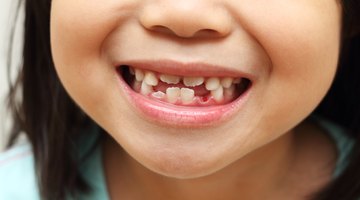When Do Kids Get Molars?
Checking on Your Child's Chomper Progress
Teeth come and go, but molars are here to stay from the time they first erupt in your school-age child. These strong teeth handle a lot of the chewing work, so keeping them healthy is important once they show up. Knowing what's normal for molar growth helps you spot issues early when they're easier to correct.
What Is a Molar?

When Do Baby Molars Fall Out?
Learn More
Molars are the wide, strong teeth at the back of the mouth on the top and bottom. They grind your food until it's mashed up enough to easily swallow. These teeth are the strongest ones in the mouth. Adults have three molars on each side of the mouth—top and bottom—for a total of 12 molars. They're called the first, second and third molars. Your third molars are actually your wisdom teeth.
You also have premolars, which are closer to the front of the mouth. You have two premolars on each side of the mouth on both top and bottom for a total of eight. They help crush and grind food. They're not quite as large as molars, but they're still bigger and stronger than incisors and canines.
When Do Molars Erupt?
Premolars come in first as baby teeth. The first premolars usually erupt between 13 and 19 months. The second premolars grow in between 23 and 33 months. Your child eventually loses those premolars. The new permanent premolars make their appearance between 9 and 12 years of age.
Your child's first molars come in between ages 6 and 7 on average. They're sometimes called 6-year molars. They come in as permanent teeth. In other words, they don't replace a tooth that has been lost.
Second molars usually erupt between 11 and 13 years of age and are sometimes referred to as 12-year molars.
Third molars, or wisdom teeth, often pop up between 17 and 21 years of age. Because of their positioning in the back of the mouth, third molars aren't very useful. Many people actually have their wisdom teeth removed to avoid complications.
Teething Relief for Molars

How Long Does it Take for a Baby to Cut Molars?
Learn More
You're used to dealing with baby and toddler teething pain. The telltale fussiness and increase in chewing lets you know it's time for soothing relief. By the time your child gets his molars, he's old enough to tell you when it hurts. Some kids feel little or no pain with molars, while others feel discomfort. You can choose from several pain relief options.
If your child complains of pain as the molars erupt, try these:
- Use children's pain reliever in the correct dose based on your child's age.
- Switch to a soft diet until the pain decreases.
- Offer cold foods and drinks to relieve the pain.
When to See the Dentist
Your child should see her dentist once every six months for routine visits. The dentist cleans the teeth and checks for proper development. Expect the dentist to give you a report at the end of each visit, but don't be afraid to ask questions about your child's molars or other teeth.
If you have concerns about how your child's teeth are growing, give your dentist a call. For example, you might call if your child's molars are late or if they seem to be growing incorrectly. You should also call if your child complains of tooth pain.











